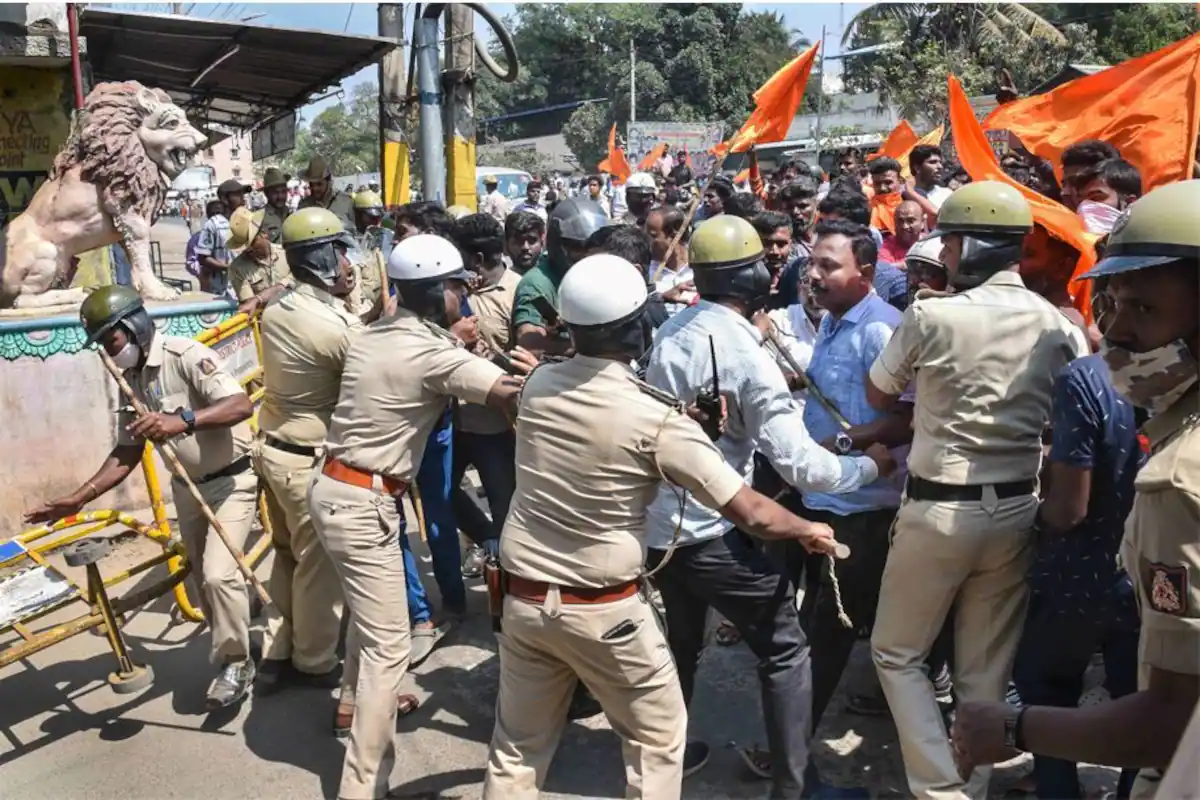Shivamogga, February 22: Police have arrested six people from the city so far in the case of Bajrang Dal workers Harsha and a few more defendants are still loose, according to a senior police officer.
The 28-year-old Harsha was killed on Sunday night by a group of attackers who led to the incident of fertilizer and violence lost in the city on Tuesday, February 22 and forbidden order had been clamped.
Overcoming the media here, police supervisor B M Lakshmi Prasad revealed that the arrest included Shivamogga Mohammed Kashif, Syed Nadeem, Ashifullah Khan, Nehal and Abdul Afnan. Except Kashif who is 32 years old, all aged between 20 and 22 years.
He said these people had previously lived together but now live separately. Kashif has several criminal cases against it.
According to Prasad, a few more involved in this case and hunting have been launched to track them.
“Their role has been identified. Nine Cemara has been submitted and 13 cases have been taken. A total of 18 vehicles have been burned with eight cases of injury. About 1,200 police have been deployed in the city of Shivamogga to prevent violence, officers said. There were accusations of riots and hurt religious sentiments against Harsha, “he added.
Police officers said 12 more were detained and questionable but their role was not revealed.
Following Harsha’s murder, the city witnessed violence, combustion, pelting stones and damage to the traits during the funeral procession on Monday which left at least three people, including a photo journalist and a police officer, was injured. Some two-wheeled wheels are broken or burned.
Because tensions apply in Shivamogga, district administration has extended the curfew to Friday. Deputy Commissioner Dr. Selvamani said on Tuesday that further decisions in this case would be taken on Friday morning. Holidays have been declared in schools and colleges.
Police personnel have been deployed in every corner and corner of the city. The District Authority has appealed to people to keep peace and calm.
Additional Police Director C Pratap Reddy said several vehicles were burned in the tunganagar on Tuesday morning, despite the command of the occupants that had been clamped under the part 144 CRPC.
“After Harsha’s murder, there was a very stressful situation in the city and the surrounding area. Additional forces rushed to Shivamogga and many arrangements were made by the deputy commissioner and police supervisor to ensure that the impact of the murder. It did not spread further,” Reddy said.
The official said 14 different combustion and violence incidents occurred in the city (after murder), which would require the first submission.
In three cases, the firs has been registered, he said, adding, the police tried to track them lost motorbikes and their properties in combustion and violence.
A report by India currently states that according to Kashif’s wife, it was accused of Mohsina, her husband came out at 8pm at the night of Harsha’s murder, said that he would buy diapers for the baby, and he returned home only after 11pm and said he was with friends . The police then came and took him away, he said.
Previously, several BJP leaders including Karnataka Minister K eshwarappa and State Union Minister Shobha Karandlaje claimed the conspiracy behind Harsha’s murder, and demanded that Nia Probe in it.
Esharappa, who came from this district, alleged “Musalman Goondas” was behind the murder of activists.
The National BJP Secretary General (Organization) B L Santosh accused Harsha killed by Jihadi fundamentalists for his opposition to the headscarf in educational institutions.
Revenue Minister Karnataka R Ashoka said the murder had a relationship with the ongoing hijab row in the state.
“This murder occurs when the hijab controversy starts. It is clear that there is a relationship between this murder and the hijab line,” Ashoka said.
Some Muslim girls from Udupi approached the Karnataka High Court when they allegedly denied entering class with their headscarves or Islamic headscarves.
Instess on the girls wearing headscarves, some Hindu students began to come to college wearing a turmeric scarf. The hijab trend versus the saffron scarf gradually spread to other parts of the country that leads to communal tensions in several educational institutions.

